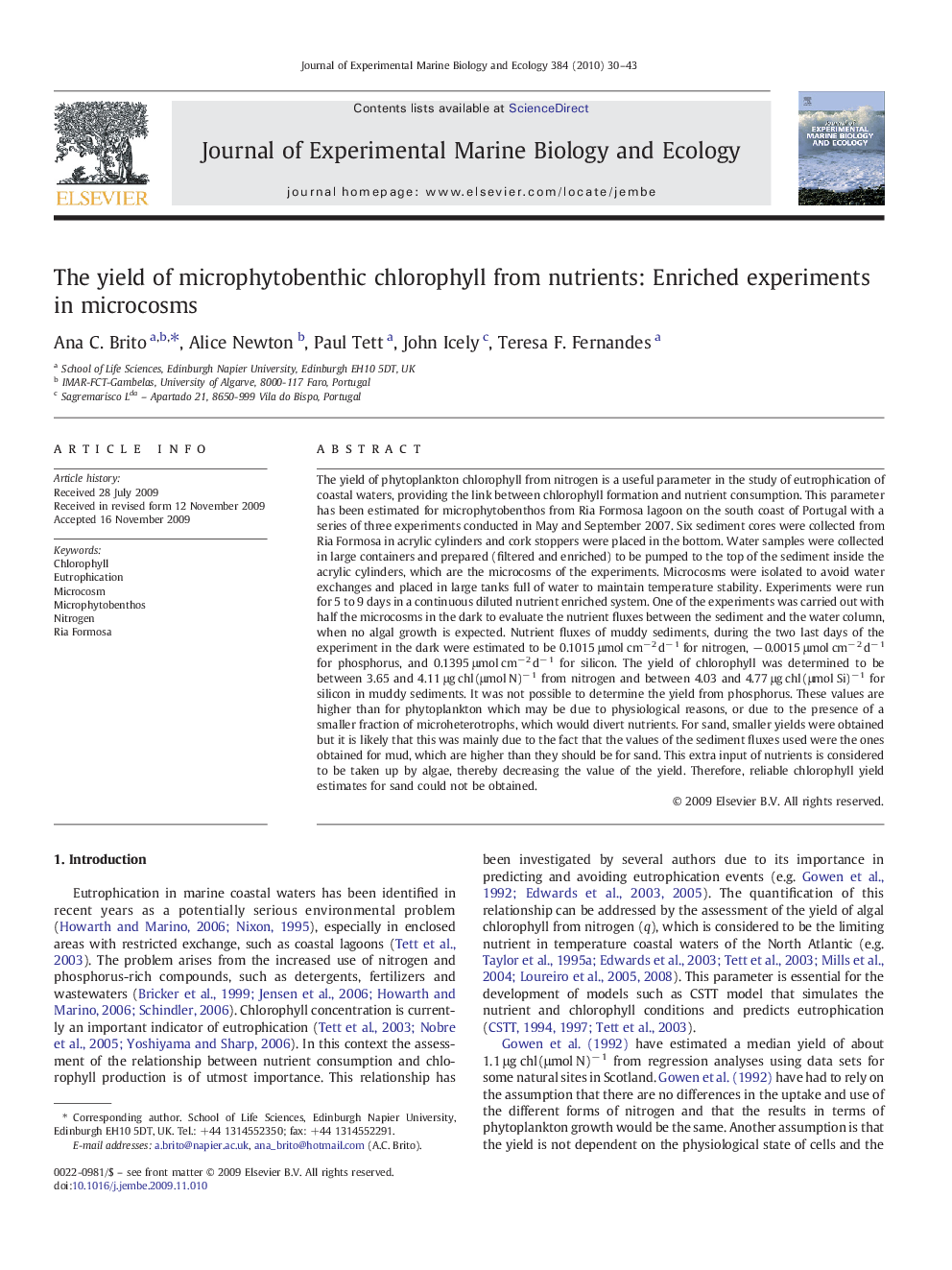| کد مقاله | کد نشریه | سال انتشار | مقاله انگلیسی | نسخه تمام متن |
|---|---|---|---|---|
| 4396639 | 1618476 | 2010 | 14 صفحه PDF | دانلود رایگان |

The yield of phytoplankton chlorophyll from nitrogen is a useful parameter in the study of eutrophication of coastal waters, providing the link between chlorophyll formation and nutrient consumption. This parameter has been estimated for microphytobenthos from Ria Formosa lagoon on the south coast of Portugal with a series of three experiments conducted in May and September 2007. Six sediment cores were collected from Ria Formosa in acrylic cylinders and cork stoppers were placed in the bottom. Water samples were collected in large containers and prepared (filtered and enriched) to be pumped to the top of the sediment inside the acrylic cylinders, which are the microcosms of the experiments. Microcosms were isolated to avoid water exchanges and placed in large tanks full of water to maintain temperature stability. Experiments were run for 5 to 9 days in a continuous diluted nutrient enriched system. One of the experiments was carried out with half the microcosms in the dark to evaluate the nutrient fluxes between the sediment and the water column, when no algal growth is expected. Nutrient fluxes of muddy sediments, during the two last days of the experiment in the dark were estimated to be 0.1015 μmol cm− 2 d− 1 for nitrogen, − 0.0015 μmol cm− 2 d− 1 for phosphorus, and 0.1395 μmol cm− 2 d− 1 for silicon. The yield of chlorophyll was determined to be between 3.65 and 4.11 μg chl (μmol N)− 1 from nitrogen and between 4.03 and 4.77 μg chl (μmol Si)− 1 for silicon in muddy sediments. It was not possible to determine the yield from phosphorus. These values are higher than for phytoplankton which may be due to physiological reasons, or due to the presence of a smaller fraction of microheterotrophs, which would divert nutrients. For sand, smaller yields were obtained but it is likely that this was mainly due to the fact that the values of the sediment fluxes used were the ones obtained for mud, which are higher than they should be for sand. This extra input of nutrients is considered to be taken up by algae, thereby decreasing the value of the yield. Therefore, reliable chlorophyll yield estimates for sand could not be obtained.
Journal: Journal of Experimental Marine Biology and Ecology - Volume 384, Issues 1–2, 1 March 2010, Pages 30–43